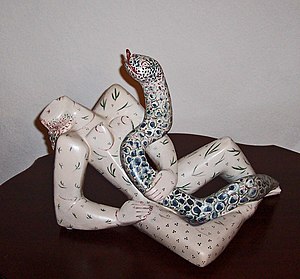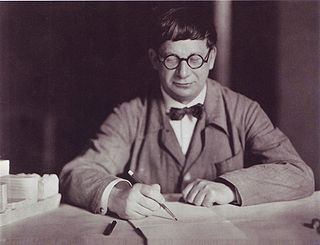
Hans Poelzig was a German architect, painter and set designer.
Norbert Kricke was a German sculptor.

Marlene Neubauer-Woerner, born Marlene Woerner, was a German sculptor. She was born in Landshut, Germany.

Salomé is a German artist. His paintings are in renowned museums and collections all over the world. Salomé became known as one of the members of the art group Junge Wilde or Neue Wilde. He also is recognized as a sculptor and Punk singer.
Binka Zhelyazkova, was a Bulgarian film director who made films between the late 1950s and the 1990s. She was the first Bulgarian woman to direct a feature film and one of the few women worldwide to direct feature films in the 1950s.
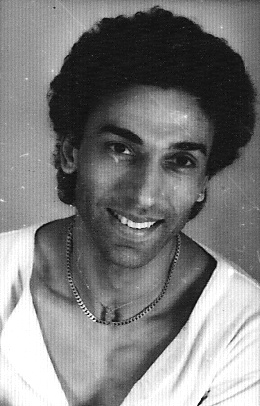
Benjamin Feliksdal is a Dutch ballet dancer. He has danced as soloist and principal dancer with Het Nederlandse Ballet 1960, Het Nationale Ballet 1961/1971, and with the Royal Ballet of Flanders 1972/1973.

The Friedrichstadt-Palast, also shortened to Palast Berlin, is a revue theatre in the Berlin district of Mitte. The term Friedrichstadt-Palast refers both to the building as well as the institution and its ensemble. The present building is distinct from its predecessor, the Old Friedrichstadt-Palast, which was located near Schiffbauerdamm and demolished in 1985. To distinguish it from its aforementioned predecessor, the building is also commonly known as Neuer Friedrichstadt-Palast (New Friedrichstadt-Palast).
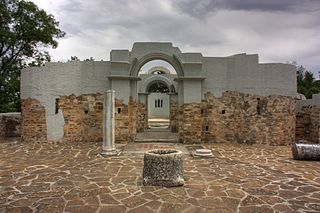
The Round Church, also known as the Golden Church or the Church of St John, is a large partially preserved early medieval Eastern Orthodox church. It lies in Preslav, the former capital of the First Bulgarian Empire, today a town in northeastern Bulgaria. The church dates to the early 10th century, the time of Tsar Simeon I's rule, and was unearthed and first archaeologically examined in 1927–1928.

Deyanira África González Melo is a Mexican sculptor who generally works in ceramics, depicting elements of the human form, especially the torso, generally with mutilations and other disturbing elements to dispute the otherwise traditional and sensual depictions of the human body. She has exhibited her work since studying at the Escuela Nacional de Artes Plásticas (ENAP) in Mexico as well as in Europe and the Caribbean. Her work has received recognition in Mexico and abroad, and is a member of the Salón de la Plástica Mexicana.

Ludmila Seefried-Matějková is a Czech sculptor and painter. She lives in Berlin.
Sabine Funke is a German painter who lives and works since 1987 in Karlsruhe.

Jeanne Mammen was a German painter, illustrator, and printmaker. Her work is associated with the New Objectivity, Symbolism, and Cubism movements. She is best known for her depictions of queer women and Berlin city life during the Weimar period.
Dina Stancheva is a Bulgarian architect who has received multiple awards for her designs. She was honored with the Koliu Ficheto award in 1968, the Red Banner of Labor Award in 1977, and received the Gold Badge of the Bulgarian Union of Architects in 1985.

Roma Babuniak is an artist whose work is associated with bone china and unglazed biscuit porcelain. She lives and works in Germany and France She has won many prizes and awards, in 1986, the 1st International Ceramics Contest Mino, Japan, and the 1999 Premio Diputacio da Valencia; International BiennalManises, Museu de ceramic de Manises, Spain among others.
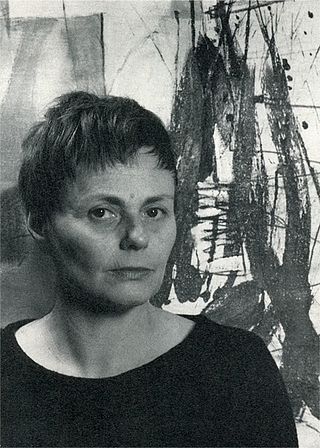
Irma Hünerfauth, also known as IRMAnipulations was a German painter, sculptor and object artist who turned junkyard scrap into sculptures, machines and kinetic art objects that mocked consumer society. She opposed traditional academic art, rebelled against academism and followed radical contemporary art trends in post-war Germany. Through her work she is related with the concept of artists from the post-war modernity as well as the Nouveau Réalisme group of artists, such as Niki de Saint-Phalle, Jean Tinguely, Arman as well as Daniel Spoerri.
Johanna Rytkölä is a Finnish sculptor who works in stoneware ceramics. She studied at the University of Art and Design in Helsinki, Finland, receiving a Master of Arts degree in the Department of Art Education in 1982, and in 1986, a Master of Arts degree in the Department of Ceramics and Glass Design. The University of Art and Design became part of the Aalto University in 2010. She received the state artist grant for a five-year period in 2008 and for one year in 2015. She lives and works in the city of Vantaa in her studio house renovated from a former grocery store building.
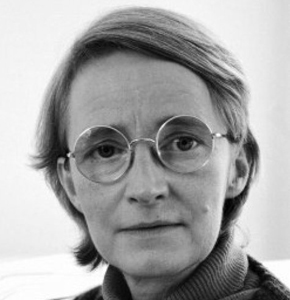
Eva Sørensen was a prolific Danish sculptor and ceramist whose granite and marble works are exhibited in museums and public spaces across Denmark. She died in Verbania in Italy.
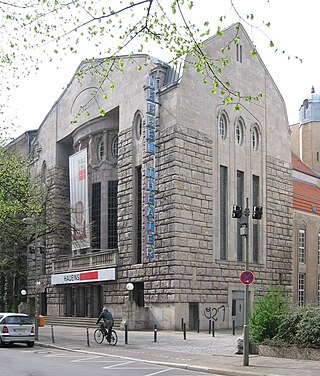
The Hebbel-Theater is a historic theatre building for plays in Berlin-Kreuzberg, Germany. It has been a venue of the company Hebbel am Ufer (HAU) from 2003.
Gudrun Baudisch, later Gudrun Baudisch-Wittke was an Austrian ceramist, sculptor and painter. Baudisch founded the Keramik Hallstatt workshop.

Henrieta Todorova was a Bulgarian archaeologist, specialist in prehistory, professor, corresponding member of the Bulgarian Academy of Sciences, corresponding member of the German Archaeological Institute in Berlin, and a foreign member of the academy Leibniz Scientific Society in Berlin.
